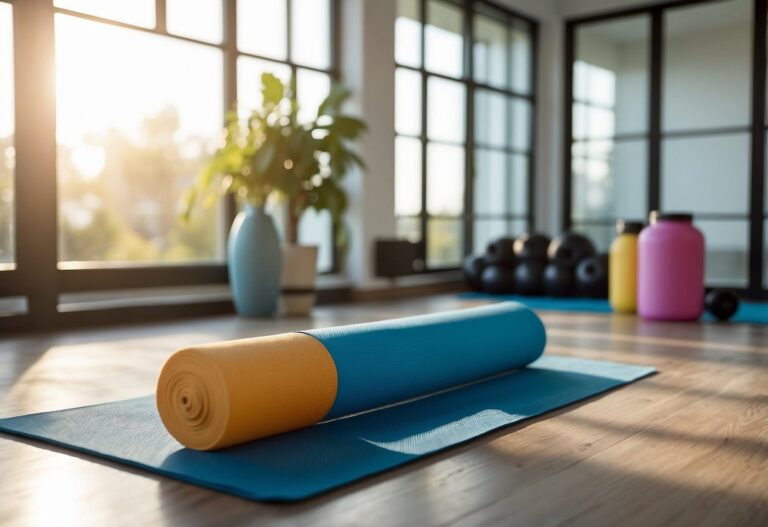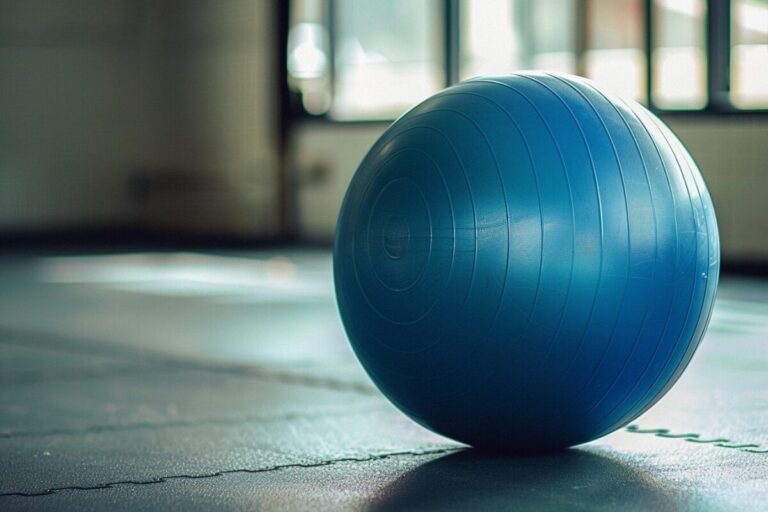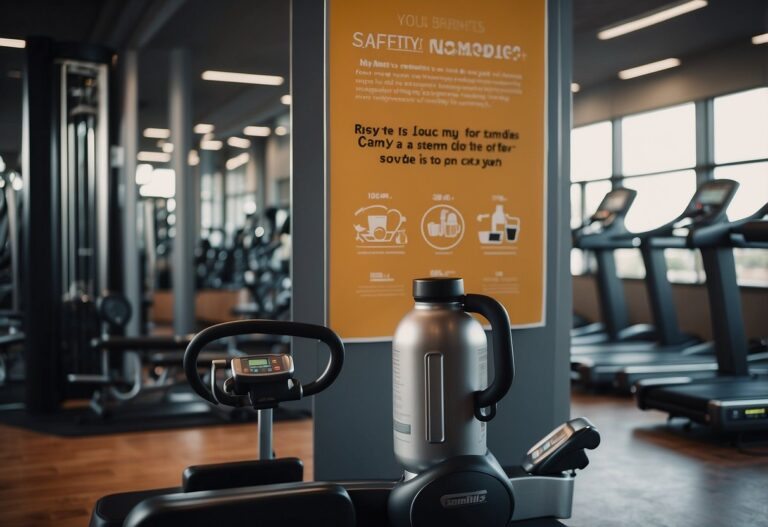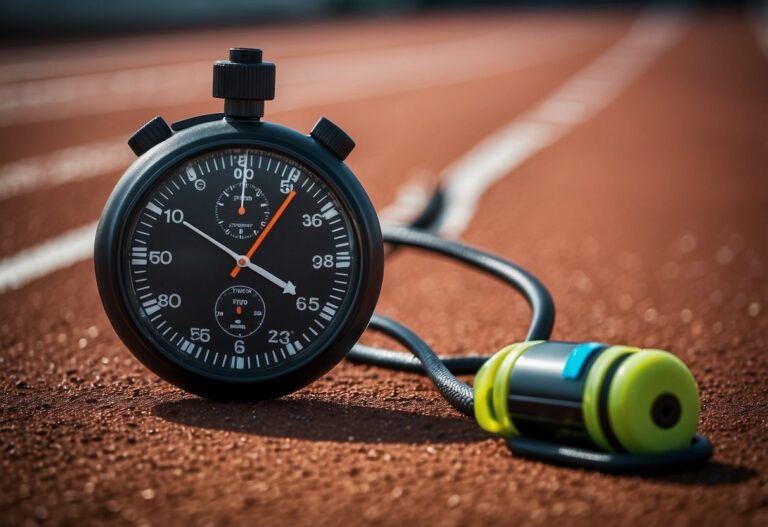Starting a workout plan can be stressful, especially if you’re new to exercise.
It’s probably taken you enough time deciding that you want to START getting fit and then you find there’s so many questions to think about: What exercises should I do? For how long? What equipment do I need? Do I need to join a gym?
But, it doesn’t need to be that way. There’s a few simple steps you can follow to make sure you’re getting the most from your workouts without overdoing it, running the risk of burnout or injury.
Finding a balance between getting results and avoiding injury or burnout as beginner starting workouts at home is pretty straightforward. A typical beginner workout routine typically lasts between 30 to 45 minutes, with a 5-10 minute warm-up, 20-30 minutes of strength and/or cardio exercises, and a 5-10 minute cool-down. This allows beginners to cover a variety of exercises while reducing the risk of burnout and injury.
What Makes a “Beginner”

You’d imagine that a ‘beginner’ in the simplest sense is someone who is a complete newbie to exercise. While this is a fair assumption, you also need to consider two other categories of people.
Firstly, you have someone who is returning to working out after an extended break. This could be because of illness or injury over a long period of time that means they’ve lost their level of fitness or muscle gains.
I recently fell into this category myself. I took a break from running over the summer months and concentrated on resistance training instead. As soon as I tried to run the same distance as I was earlier in the year, I really struggled and have had to reset my expectations a little.
And finally, there are experienced athletes or gym-goers who start a new training plan or exercises.
I’m sure you’ve seen the Tiktoks of bodybuilders trying to perform calisthenics? These guys and girls are ridiculously strong and fit. But give them something a bit different to what they’re used to and they’re back to being a noob all over again.
Regardless of the category, the beginner phase is your opportunity to develop proper form, and build a foundation of strength and endurance.
It’s also important to have realistic expectations about the length and intensity of workouts to set yourself up for long-term success. There’s no point trying to smash out a 5k or 10k run from day 1 if the farthest you’ve ran in the last year is up and down the stairs.
Starting an exercise routine at home can be a great foundation to build upon. WHo knows where that might take you?
The Benefits of Exercise

Starting regular exercise, whether it’s a daily walk or something more strenuous, can provide you with plenty of excellent health benefits.
Amongst those benefits are an improvement in cardiovascular health, massively important in keeping your heart and blood vessels in prime condition.
This includes enhancing the efficiency of your heart’s pumping ability, ensuring smooth blood flow in your arteries and veins, and maintaining optimal blood pressure and cholesterol levels.
Regular physical activity fortifies your heart muscle, diminishing the risk of heart diseases, strokes, and managing high blood pressure.
As well as the cardiovascular benefits, exercise plays a significant role in increasing muscle mass and strength, making everyday tasks easier and boosting metabolism. This increase in metabolism, combined with a healthy diet, will help with fat loss and/or sustaining a healthy body weight.
The mental health benefits of exercise are equally impressive.
Physical activity stimulates the release of endorphins and neurotransmitters in the brain, which are natural mood elevators. This biochemical process significantly reduces symptoms of anxiety and depression.
Moreover, regular exercise enhances cognitive functions such as memory, focus, and concentration by increasing blood flow to the brain, as noted by the American Psychological Association.
Starting an exercise routine might seem daunting, but the array of long-term benefits for your physical and mental wellbeing makes it a worthwhile endeavor. By incorporating exercise into your daily life, you not only improve your overall health but also enrich your quality of life.
Related Posts:
How Much Exercise Per Week Do Experts Recommend?
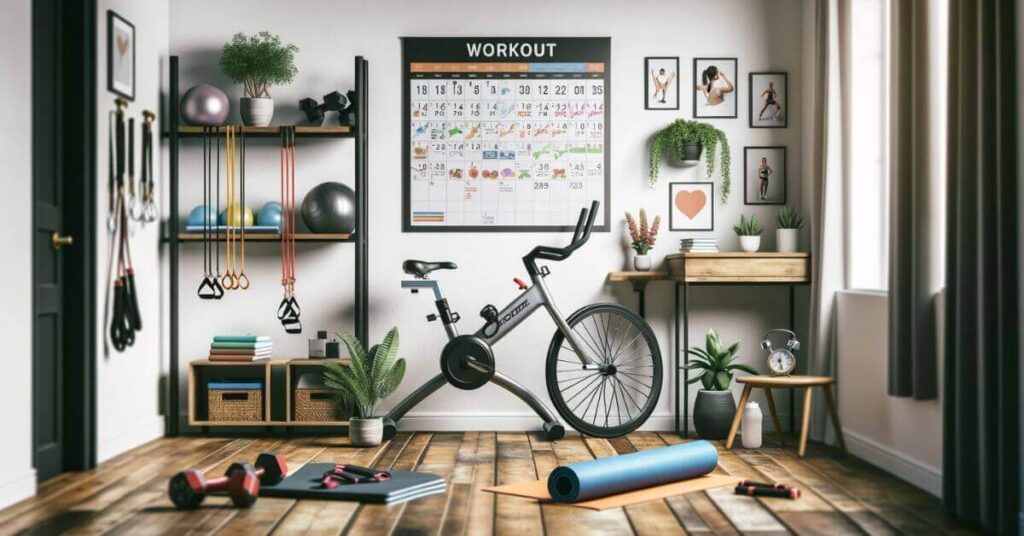
To gain the full rewards of regular physical activity, experts recommend a combination of cardiovascular exercise, resistance training, flexibility training, and balance training.
According to the NHS, adults aged 19 to 64 should aim to do at least 150 minutes of moderate-intensity aerobic activity like going for a brisk walk, riding a bike or hiking.
Alternatively, 75 minutes of vigorous-intensity aerobic activity per week like running, aerobics or team sports like football is good too.
As well as cardiovascular exercise, resistance training is also recommended. Adults should be looking to work all major muscle groups (legs, hips, back, core, chest, shoulders and arms) on at least 2 day per week. Using weights, resistance bands, or bodyweight exercises are all great ways to achieve this with compound moves like squats, lunges, and rows being a perfect start for beginners.
Balance and flexibility training is also a great way for a beginner to get into exercise. Activities like yoga, Pilates, and static stretching help improve your range of motion and reduce the risk of injury.
They also help to tone muscles which will improve your overall strength and balance.
As resistance training is not always aerobic, you should add these into your workout plan IN ADDITION to your 150 minutes of aerobic activity. Spread your activities across the week to allow your body enough time to recover from each one.
It’s never too late to start exercising, and even small amounts of exercise can have a big impact on overall health and wellbeing.
How Much Exercise Do You Need?
How Long Does It Take to See Results From Working Out?
When you first get started with working out, you’ll begin to notice some results right away.
In around 1-4 weeks, you’re probably going to notice that you are sleeping better, your energy levels improve and your stress levels reduce too.
After 6-8 weeks, you’ll start noticing visible changes like increased muscle definition, weight/fat loss, and greater cardiovascular endurance – you’ll stop breathing heavy from walking upstairs!
The main thing with any exercise routine is to keep it up and remain consistent. Aim for some form of activity whether it’s walking or a quick 20-minute workout video. 3-4 times per week will keep giving you visible results to keep your motivation levels up.
Also, tracking your progress with before/after photos or fitness benchmarks like personal bests can help you stay motivated too.
Recommended Workout Duration for Beginners
When you’re just getting started, less is often more. Here are some workout duration guidelines:
Total Workout Time
I recommend aiming for 30-45 minutes for your entire workout session. This duration allows you to break a sweat, elevate your heart rate, and stimulate your muscles without overtaxing yourself as a beginner.
Warm-Up
Before starting strength training or cardio exercises, spend 5-10 minutes warming up. This includes light cardio such as walking to increase blood flow to the working muscles and dynamic stretching to take your joints through full ranges of motion. A proper warm-up prepares your body for activity and helps prevent injury, so don’t skip it.
Strength Training
When it comes to strength training, I suggest lifting for 20-30 minutes, focusing on 2-3 sets of 8-15 reps per exercise. Concentrate on compound exercises like squats, deadlifts, presses, rows, and lunges that work multiple large muscle groups efficiently. It’s essential to keep the movements simple while developing good technique. Master bodyweight exercises before adding external loads like dumbbells and kettlebells.
OR
Cardio
For cardio, I recommend spending 10-20 minutes on low-impact activities such as brisk walking, using a stationary bike at an easy-moderate intensity, or an elliptical machine with a beginner program. High knees and jumping jacks can also get your heart pumping. It’s important to build up your stamina gradually.
Cooldown
After your workout, take 5-10 minutes to cool down. Try some static stretching when your muscles are warm, foam rolling to release tight spots, and rehydrating and refuelling with protein to aid muscle recovery. A cool-down transitions your body from exercise back to rest.
This quick routine is a perfect balanced beginner session. Or if you’re feeling adventurous, you can try something like this:
25 MIN FULL BODY HIIT For Beginners – No Equipment
Related Posts:
Signs Your Workouts Are Too Long
It’s all too easy to do too much too soon as a beginner. Trying to run 5k straight from the sofa or lifting 20kg dumbbells for a bicep curl are common mistakes. But so is exercising for too long! Here are some signs that you may be over-exercising and need to cut back:
- Excessive muscle soreness that limits your function and mobility.
- Ongoing lack of energy and constant fatigue, even after proper rest.
- Decreased performance session-over-session.
- Taking longer to recover between workout days.
Don’t push yourself too hard too soon. Overtraining can lead to frustrating setbacks like injuries.
Remember to take rest days and gradually build the intensity of your workouts to avoid injuries or aggravating any existing conditions. A great example of a workout program designed to ‘ease you in’, is the Couch to 5K programme from the NHS in partnership with the BBC.
It’s 9 weeks of literally getting you from the couch to running 30 minutes continuously. My wife and I have both used it, thinking there’s no way we’re running for 30 minutes not stop, but it works! It’s a perfect beginners workout.
Tips for Beginners
Starting out as a beginner, you really need to focus on learning proper exercise form and technique before adding weight or intensity.
Forget the bravado of how much weight you can lift straight off the bat. Respect your beginner status and build up duration and intensity slowly over time as your fitness improves.
You should take the cues that your body gives you as a sign so make sure you don’t ignore pain or push through extreme fatigue. Make sure you’re taking enough rest in between workouts to give your muscles enough time to recover, with at least 1-2 full rest days per week.
And finally, be reasonable about your expectations. You won’t turn into some toned gym god or goddess overnight but stay consistent and eventually you’ll see all the small changes lead to one big overall success.
Related Posts:
Conclusion
Incorporating a balanced workout routine is key for beginners to maximise results safely and efficiently. A combination of cardio, strength training, warm-up, and cool down components in 30-45 minute sessions is recommended. Gradually increase workout duration as fitness level improves. Be patient with the process and pay attention to signs of over training. By keeping workouts focused and balanced, beginners can achieve their fitness goals. Remember to listen to your body and enjoy the journey!
Frequently Asked Questions
What are some effective exercises for beginners to lose weight at home?
As a beginner, there are many effective exercises that can help you lose weight at home. Some of these exercises include:
- Bodyweight squats
- Lunges
- Push-ups
- Plank
- Jumping jacks
- Burpees
- Mountain climbers
These exercises are easy to do and require no equipment. They can help you burn calories, build muscle, and improve your overall fitness.
How many exercises should a beginner start with for a home workout?
As a beginner, it’s important to start with a few simple exercises and gradually increase the intensity and duration of your workouts. You can start with two to three exercises per workout and gradually add more as you get stronger and more comfortable with the movements.
Is a 20-minute home workout sufficient for beginners?
Yes, a 20-minute home workout can be sufficient for beginners, especially if you are just starting out and have limited time or energy. However, it’s important to make sure that you are using the right exercises and intensity to ensure that you are getting the most out of your workout.
What is a good duration for a beginner’s workout at home?
A good duration for a beginner’s workout at home is around 30 minutes to an hour, depending on your fitness level and goals. It’s important to focus on quality over quantity, so make sure that you are using the right exercises and intensity to ensure that you are getting the most out of your workout.
How many days a week should a beginner workout?
As a beginner, it’s important to start slowly and gradually increase the frequency of your workouts. You can start with two to three days a week and gradually increase to four to five days a week as you get stronger and more comfortable with the movements. It’s important to give your body time to rest and recover between workouts to avoid injury and burnout.


